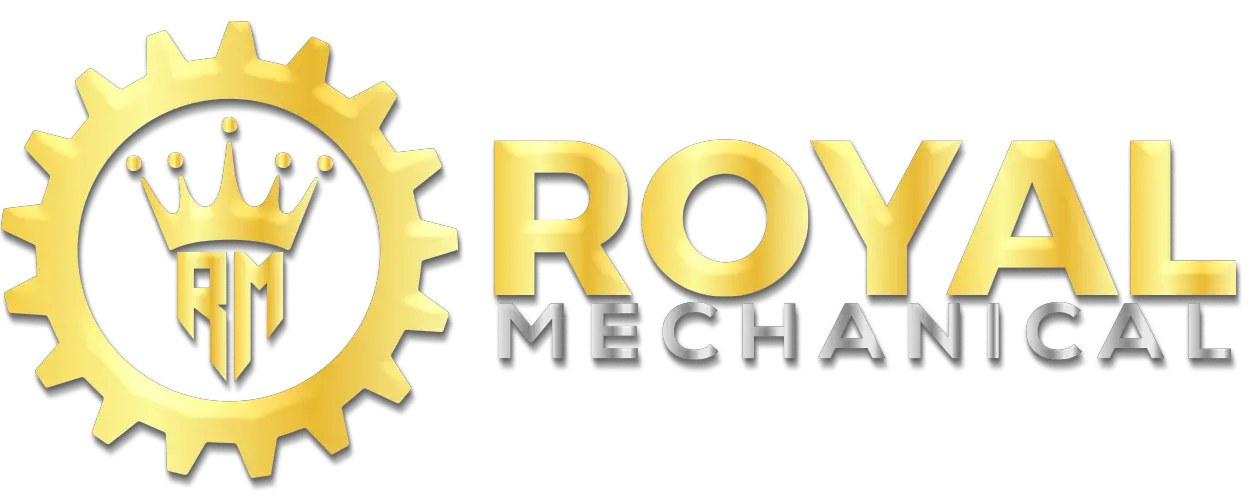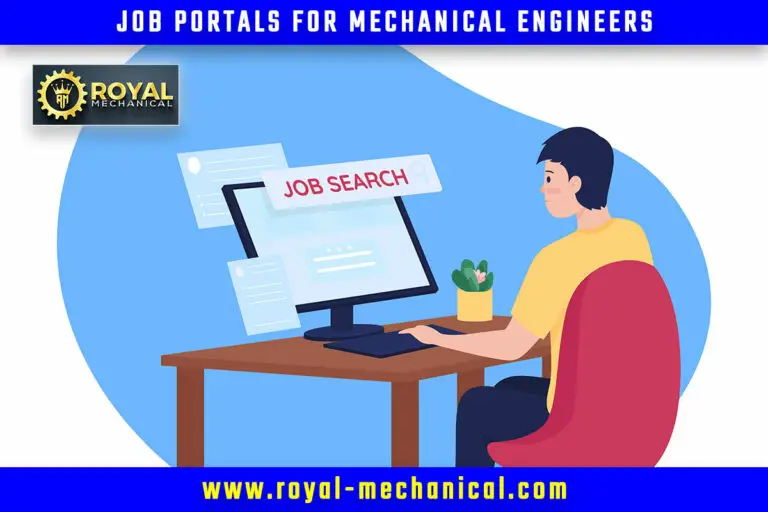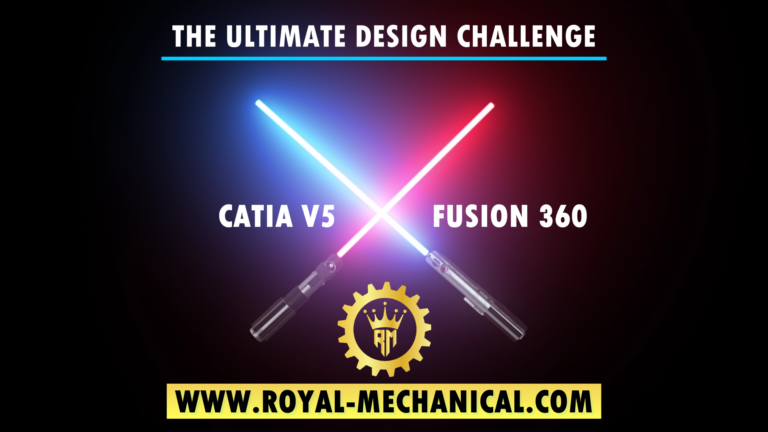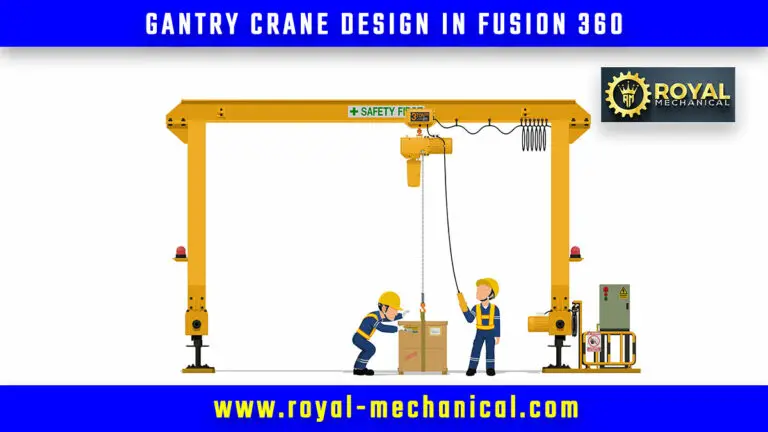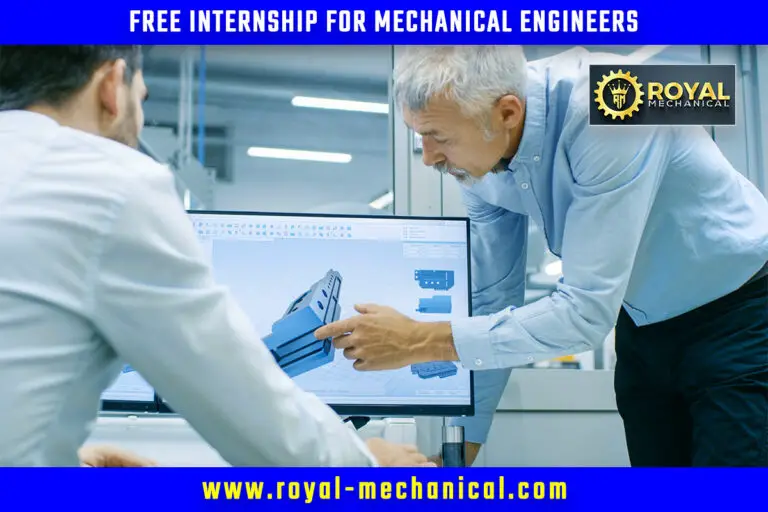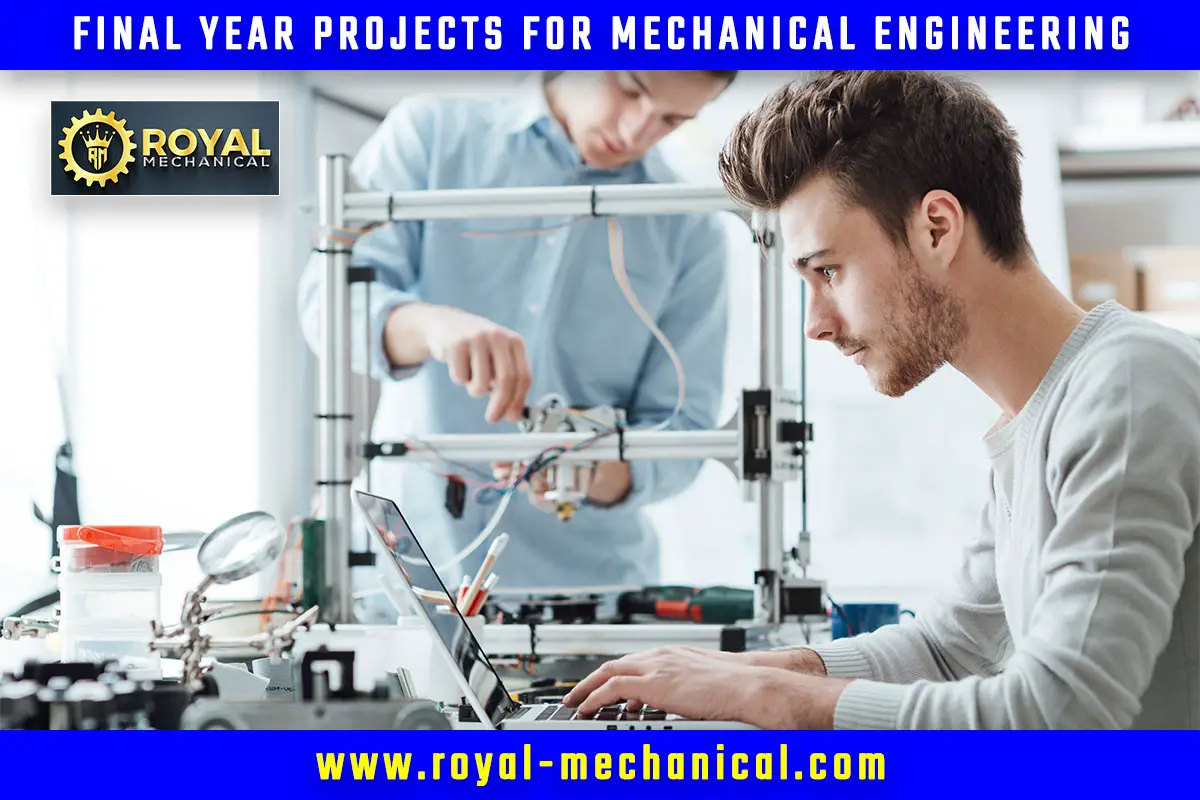
“Simple Final Year Project Ideas for Mechanical Engineering Students” is one of the most searched keywords on Google by final-year mechanical engineering students. Projects are an excellent way for mechanical engineering students to gain practical experience. Of course, to gain valuable experience. This article lists Industry Oriented Final Year Projects and Mini Projects for Mechanical Engineering Students.
Table of Contents
Types of Final Year Projects
There are two types of projects a mechanical engineering student can take up during the final year of engineering.
- Research Oriented Projects
- Industry Oriented Projects
1) Research Oriented Projects (for Final Year Project Ideas for Mechanical Engineering Students)
A research-oriented project is a project that is focused on conducting original research to advance knowledge in a particular field or to solve a specific problem. This project typically involves designing and carrying out experiments, collecting and analyzing data, and interpreting the results. The ultimate goal of a research-oriented project is to contribute new insights and understanding to the field and potentially lead to discoveries or applications.
Research-oriented projects are suitable for students pursuing a career in academia and research. However, I don’t recommend Research Oriented Projects to students seeking jobs after completing their mechanical engineering studies at a college/university.
2) Industry Oriented Projects (for Final Year Project Ideas for Mechanical Engineering Students)
An industry-oriented project is a project that is focused on solving real-world problems and addressing the needs of a specific industry or business. This type of project typically involves working with industry partners, such as companies or organizations, to identify and understand their problems and needs and then using the latest technologies and techniques to develop solutions to those problems. The ultimate goal of an industry-oriented project is to create products, services, or processes that can be commercialized and used by industry partners.
It’s always better to do projects within a company related to the mechanical industry. But, not all mechanical engineering students can get an opportunity to perform projects within a company. So, mechanical engineering students take up exciting projects within their colleges. But unfortunately, they seldom gain practical experience due lack of time, money, and expertise.
So, I recommend mechanical engineering students take up design projects intending to manufacture and test prototypes. However, manufacturing and testing prototypes will require substantial time, effort, and money. Therefore, mechanical engineering students should design products, machines, equipment, tooling, etc., without the limitation of budget. Unfortunately, due to budget constraints, many students are designing substandard products.
2a) Industry Oriented Design Projects (for Final Year Project Ideas for Mechanical Engineering Students)
Design projects are also a great way to gain practical experience. In this article, I provide a list of design projects which mechanical engineering students should undertake to gain valuable experience. Once you have decided to launch a design project, the immediate question that comes to mind is which CAD software should be used for the project. Many students use cracked versions of high-end CAD software. I recommend students use lightweight CAD software for their projects. Using light CAD software, the computer’s response time will be fast, and they can complete their projects faster. In addition, many CAD software companies offer a trial version of their software. Mechanical Engineering students should use such a trial version of the software instead of a cracked version of any software.
Fusion 360 is available for free personal use for individuals who are doing home-based, non-commercial design, manufacturing, and fabrication projects. So, I recommend that students use this great opportunity and Fusion 360 for their final year and mini projects.
2b) Mini-Projects (Final Year Project Ideas for Mechanical Engineering Students)
Mechanical engineering students should not wait until their final year to take up project work. Instead, I recommend they do as many projects as possible, like mini-projects. Mini projects are short-term projects usually completed in 1 week or 50-60 hours of effort.
Before completing your diploma or a degree in mechanical engineering, you should have completed at least five mini-projects.
2c) Technical Seminar (for Final Year Project Ideas for Mechanical Engineering Students)
Mechanical engineering students must prepare and give a technical seminar as part of their curriculum. Usually, students offer a technical seminar on one of the most advanced technologies related to mechanical engineering. In addition, I recommend that mechanical engineering students offer a technical seminar on all of their projects, including mini-projects. This will help you not only help you improve your communication skills but also prepare for a future interview. Whether you get an opportunity or not to give a seminar to an audience is immaterial. Always keep a presentation in Microsoft format readily available. Be ready to present at any time needed.
Importance of Project Reports for Final Year Projects as well as Mini projects.
Mechanical engineering students should prepare project reports for Final Year Projects and Mini projects for the reasons below.
1) Document your learnings
– capture all your learnings in a project report for future use. For example, preparing a resume for a job position or interview. Please note that after a few years, you might forget all the details of the projects and mini-projects you have undertaken. You might need a few project details for a job position and interview. Then, you can refer to this well-documented project report.
2) Interview preparation
– often, the interviewer asks questions based on what you have written in your resume. When you are a fresher and have a few projects and internships mentioned on your resume, the interviewer will likely spend at least 50% of the time asking questions about these projects and internships. If you have a well-documented project report, you can prepare for the interview by referring to it.
I) Industry-Oriented Final Year Projects for Mechanical Engineering Students
01) Final Year Projects for Mechanical Engineering: Design of a 3D Printer.
A 3D printer is a device that creates a physical object from a digital model, typically by laying down successive layers of material. The most common type of 3D printer uses fused filament fabrication (FFF), in which a filament of thermoplastic material is heated and extruded through a small nozzle to form a 3D object.
Other 3D printers use different techniques, such as stereolithography or digital light processing (DLP), to create objects. 3D printing is used in various industries, including manufacturing, aerospace, and healthcare. In addition, it is becoming increasingly popular for prototyping and creating custom parts and products.
There is enough information on the internet for mechanical engineering students to design a 3D printer.
02) Final Year Projects for Mechanical Engineering: Design a 6 DOF Robotic Arm.
A 6 DOF (degrees of freedom) robotic arm is a type of robotic arm that is capable of moving in 6 different directions. The six directions are up and down, left and right, forward and backward, and also capable of rotating around the three axes (pitch, roll, and yaw). This allows the arm to move more versatile and flexibly, similar to how a human arm can move. 6 DOF robotic arms are commonly used in manufacturing, assembly, and other industrial applications, as well as in research and development.
There is enough information on the internet for mechanical engineering students to design a 3D printer.
03) Final Year Projects for Mechanical Engineering: Design of a Mini 3-Axis CNC Machine.
A 3-axis CNC (computer numerical control) desktop machine is a small-scale CNC machine designed to be used on a desktop or workbench. These machines are typically used for milling, drilling, and cutting various materials such as wood, plastic, and metal. They are equipped with a cutting tool, such as a router or mill, and a computer program controls that.
A 3-axis CNC machine has three axes of motion: the X-axis, Y-axis, and Z-axis. The X-axis controls the movement of the cutting tool left and right. The Y-axis controls the movement of the cutting tool forward and backward. Finally, the Z-axis controls the movement of the cutting tool up and down. This allows the machine to create complex, three-dimensional shapes and designs with precise control and accuracy.
3 Axis CNC machines are commonly used for hobby, prototyping, small-scale production, and education. They can also be used for custom and one-off projects, such as engraving, signs, and jewelry making.
There is sufficient information on the internet for mechanical engineering students to design a Mini 3-Axis CNC Machine.
04) Final Year Projects for Mechanical Engineering: Design of a Hydraulic Press with Fusion 360
A hydraulic press is a machine that uses a fluid, usually oil, to exert a compressive force on an object. The press typically consists of a cylinder with a piston inside, connected to a press plate. The cylinder is filled with oil. The piston is connected to a pump, which can be operated manually or with an electric motor. When the pump is activated, it pushes the oil into the cylinder, causing the piston to move and exert force on the press plate.
Hydraulic presses are used in various industrial and manufacturing applications, such as stamping, forging, and molding. They are beneficial in applications where a large amount of force is required to perform a task, as the fluid in the cylinder can transmit the force over a large area. They can also be used for straightening, bending, and punching.
Hydraulic presses are highly versatile and can be used in various industries, including metalworking, manufacturing, and construction. They are also used for pressing, forging, lamination, and many other industrial applications. They can be found in small, bench-top units for various tasks, all the way up to large industrial presses used in heavy manufacturing and metalworking.
There is sufficient information on the internet for mechanical engineering students to design a Hydraulic Press.
05) Final Year Projects for Mechanical Engineering: Design of a Car Scissor Lift.
A car scissor lift is a mechanical lift used to raise and lower a vehicle for maintenance, repair, and other purposes. The lift typically consists of a platform raised and lowered by interconnected scissor arms. The arms are connected to a hydraulic cylinder powered by an electric motor or a hand pump.
When the lift is activated, the scissor arms extend and contract, raising or lowering the platform. The platform is usually wide enough to accommodate a car or a small truck. In addition, it has a safety locking system to prevent the vehicle from falling.
Car scissor lifts are commonly used in automotive repair shops, service centers, and other facilities where vehicles need to be lifted for maintenance, repair, or other purposes. They are also used in some parking garages to stack cars in multi-level parking.
There is sufficient information on the internet for mechanical engineering students to design a Car Scissor Lift.
06) Final Year Projects for Mechanical Engineering: Design of a Chaff Cutter
A chaff cutter is a machine used to cut and shred stalks, hay, straw, or other vegetation types into small pieces, known as chaff. The device typically consists of a cutting mechanism, such as a rotating drum or blades, and a feeding mechanism used to feed the vegetation into the cutting mechanism.
Chaff cutters are often used in agriculture, particularly in regions where hay or straw is used as animal feed. They can be used to cut and shred a variety of crops, including wheat, barley, oat, and corn. They have also been used in horticulture and gardening to shred and mulch leaves, grass clippings, and other organic debris.
An electric motor, diesel engine, or manual operation can power the Chaff cutter. They come in different sizes, from small handheld machines to large tractor-mounted models. They are widely used in small-scale farms, homesteads, and large-scale commercial agricultural operations. They can also be used to shred mulch leaves and other organic debris and prepare bedding for livestock.
There is sufficient information on the internet for mechanical engineering students to design a Car Scissor Lift.
07) Final Year Projects for Mechanical Engineering: Design of a mobile Electric Lifter
A mobile electric lifter is an equipment used to lift and move heavy objects. It typically consists of a platform or tray raised and lowered using an electric motor and mounted on wheels or casters for mobility. It can be used in various settings, such as warehouses, factories, and construction sites. It can be operated by a single person using a remote control or control panel. Some mobile electric lifters also feature adjustable forks or arms to accommodate loads.
There is sufficient information on the internet for mechanical engineering students to design a mobile Electric Lifter.
08) Final Year Projects for Mechanical Engineering: Jib Crane Design
A jib crane is a type of crane that consists of a horizontal arm, called a jib, that is mounted on a vertical column or pillar. The jib can rotate around the column, allowing the crane to move loads in a circular area. Jib cranes are typically used in industrial and manufacturing settings, such as factories and warehouses, to lift and move heavy materials, such as machinery, raw materials, and finished goods.
They are typically operated by a trained crane operator using a control panel or remote control. Jib cranes can be classified into different types based on their jib length, jib arm rotation, and the location of the jib arm. Some types are Wall-mounted Jib Cranes, Free-standing Jib Cranes, and Pillar-mounted Jib Cranes.
There is sufficient information on the internet for mechanical engineering students to design a Car Scissor Lift.
II) Industry-Oriented Mini Project Ideas for Mechanical Engineering Students
01) Mini Project Ideas for Mechanical Engineering Students: Design of a Press Tool
Press tools are specialized tools used in manufacturing to shape and form metal and other materials by applying pressure. They are typically used in a press, a machine that uses a ram or a slide to exert force on a workpiece. Press tools are commonly used in the automotive, aerospace, and appliance industries. Press tools can be classified into different types based on the type of operation they perform. Some of the common types of press tools are:
- Punching tools are used to punch holes in sheet metal or other materials.
- Bending tools bend sheet metal or other materials to a specific angle.
- Forming tools form sheet metal or other materials into a desired shape.
- Blanking tools cut out a desired shape from a sheet of metal or other materials.
Press tools can be made from various materials, such as tool steel, carbide, and high-speed steel, and are typically designed to perform a specific function or operation. In addition, they are typically designed to be used with specific types of presses, such as mechanical presses, hydraulic presses, or pneumatic presses. Finally, they must be operated by a trained press operator.
There is sufficient information on the internet for mechanical engineering students to design a Press Tool.
02) Mini Project Ideas for Mechanical Engineering Students: Design of a Drill Jig.
A drill jig is a specialized tool to guide and position a drill to create precise holes in a workpiece. It can drill holes in various materials, such as metal, wood, plastic, and composites.
A drill jig typically consists of a base plate or fixture clamped or secured to the workpiece and a guide or template that positions the drill in the correct location. The guide or template can be fixed in place or adjustable to accommodate different size holes.
Drill jigs are commonly used in manufacturing, construction, and repair settings, where precision and repeatability are essential. For example, they can be used to drill holes for fasteners, such as screws and bolts, as well as for dowel pins and other types of hardware.
There are different types of drill jigs, such as:
- Simple drill jigs are used for drilling a single hole or a few holes of the same size and location.
- Complex drill jigs are used to drill multiple holes with different sizes and locations.
- Adjustable drill jigs can be adjusted to drill different sizes and locations of holes.
- Template drill jigs that use a template or pattern to guide the drill.
- Using a drill jig can improve accuracy, reduce waste, and increase efficiency in drilling operations.
There is sufficient information on the internet for mechanical engineering students to design a Drill Jig.
03) Mini Project Ideas for Mechanical Engineering Students: Design of an Assembly Fixture
An assembly fixture is a specialized tool used to hold and position components in a precise location during the assembly process. It helps to ensure accurate alignment and positioning of parts, which is essential for the proper functioning the assembled product. Assembly fixtures can be used for various products, such as automobiles, electronics, appliances, and other manufactured products.
An assembly fixture typically consists of a base plate or fixture clamped or secured to a work surface and a set of guides, clamps, or other devices that hold and position the components in the correct location. Some assembly fixtures have adjustable features allowing for different sizes of components or different positions of them in the assembly process.
There are different types of assembly fixtures, such as:
- Simple assembly fixtures are used for a single or a few operations.
- Complex assembly fixtures are used for multiple assembly operations with different components.
- Adjustable assembly fixtures can be adjusted to hold various sizes and shapes of components.
- Modular assembly fixtures can be configured to perform different assembly operations.
Using an assembly fixture can improve accuracy, reduce waste, increase efficiency in assembly operations, and ensure product quality, consistency, and repeatability of the assembly process.
There is sufficient information on the internet for mechanical engineering students to design an Assembly Fixture.
04) Mini Project Ideas for Mechanical Engineering Students: Design of a Machining Fixture
A machining fixture is a specialized tool used to hold and position a workpiece in a precise location during the machining process. It helps to ensure accurate alignment and positioning of the workpiece, which is essential for the proper functioning of the finished product. Machining fixtures are commonly used in manufacturing, fabrication, and repair settings, where precision and repeatability are crucial.
A machining fixture typically consists of a base plate or fixture clamped or secured to a machine table and a set of guides, clamps, or other devices that hold and position the workpiece in the correct location. Some machining fixtures have adjustable features allowing for different sizes of the workpiece or different positions of them in the machining process.
There are different types of machining fixtures, such as:
- Simple machining fixtures are used for a single or a few operations.
- Complex machining fixtures that are used for multiple machining operations with different workpieces.
- Adjustable machining fixtures can be adjusted to hold different sizes and shapes of workpieces.
- Modular machining fixtures can be configured to perform different machining operations.
Using a machining fixture can improve accuracy, reduce waste, increase efficiency in machining operations, and ensure product quality, consistency, and repeatability. It can also help to reduce the setup time for the machine and operator and improve the safety of the machining process.
There is sufficient information on the internet for mechanical engineering students to design a Machining Fixture.
05) Mini Project Ideas for Mechanical Engineering Students: Design of a Welding Fixture
A welding fixture is a specialized tool used to hold and position two or more pieces of metal in a precise location during the welding process. It helps to ensure accurate alignment and positioning of the metal parts, which is essential for the proper functioning and strength of the finished product. Welding fixtures are commonly used in manufacturing, fabrication, and repair settings, where precision and repeatability are essential.
A welding fixture typically consists of a base plate or fixture clamped or secured to a work surface and a set of guides, clamps, or other devices that hold and position the metal parts in the correct location. Some welding fixtures have adjustable features allowing for different sizes and shapes of metal parts or different positions in the welding process.
There are different types of welding fixtures, such as:
- Simple welding fixtures are used for a single or a few operations.
- Complex welding fixtures are used for multiple welding operations with different metal parts.
- Adjustable welding fixtures can hold different sizes and shapes of metal parts.
- Modular welding fixtures can be configured to perform different welding operations.
Using a welding fixture can improve accuracy, reduce waste, increase efficiency in welding operations, and ensure the welding process’s product quality, consistency, and repeatability. It can also help reduce the welder’s setup time and improve the welding process’s safety.
There is sufficient information on the internet for mechanical engineering students to design a Welding Fixture.
III) Industry-Oriented Technical Seminar Topics for Mechanical Engineering Students
- 3D Printer
- 6 DOF Robotic Arm
- 3-Axis CNC Machine.
- Hydraulic Press
- Car Scissor Lift
- Chaff Cutter
- Electric Lifter
- Jib Crane
- Press Tool
- Drill Jig
- Assembly Fixture
- Machining Fixture
- Welding Fixture
- Plastic Injection Mold
Please comment on any other interesting Project Ideas for Mechanical Engineering Students.
All the Very Best. I wish you GREAT SUCCESS in your Job Search.
